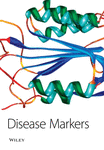Assessment of Sialic Acid Diversity in Cancer- and Non-Cancer Related CA125 Antigen Using Sialic Acid-Binding Ig-Like Lectins (Siglecs)
Abstract
This study was aimed at obtaining insight into the diversity of sialic acids in cancer- and non-cancer-related CA125 antigen, tumour marker of serous ovarian cancer. Starting from available data suggesting the possible relevance of sialic acids for discriminating CA125 antigens of different origin, we have employed a new experimental approach based on the use of human sialic acid-binding Ig-like lectins, Siglecs, as tools for the investigation of sialylation.
Siglec−2, belonging to the group of evolutionarily conserved Siglecs, and Siglec−3, −6, −7, −9 and −10, which are CD33-like Siglecs, were probed in solid-phase binding assays with cancer-related CA125 antigens from pleural fluid of patients with ovarian carcinoma (pfCA125), the OVCAR-3 ovarian carcinoma cell line (clCA125) and a non-cancer-related CA125 antigen, i.e. pregnancy-associated pCA125 antigen.
All Siglecs used showed detectable binding to pCA125 antigen. Siglec−3, Siglec−7 and Siglec−2 exhibited moderately stronger binding to pCA125 antigen than the others. In contrast to this, Siglec−2 and Siglec−3 preferentially recognized pfCA125 with greater total binding than for pCA125, whereas Siglec−9 and Siglec−10 were highly selective for clCA125.
Siglecs promise to be powerful tools for discriminating CA125 of different origin and could propagate further research on other molecular markers of biomedical and diagnostic importance.




